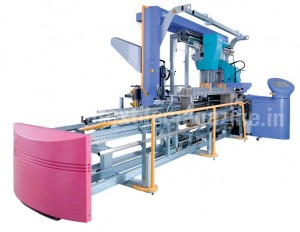Optimized workflow and increasing production quality are essential in order to succeed in today’s ever-more competitive environment, which means weaving cost efficiently and delivering on schedule, the reason why mills need to examine its work processes in every production stage to find optimisation potential. Automation of the entire process chain is a key in this, because drawing in by hand and drop wire pinning are outdated practices that limit performance. Demands for punctuality and freedom from imperfections are constantly increasing.
It is crucial that the drawing-in department be able to supply the required amount of completely drawn-in warp beams (complete loom harness, reed) to the weaving department. The increasing demand for style changes requires more and more workers in drawing-in. The trend towards higher-quality fabrics and use of increasingly finer and more specific yarns increases the number and complexity of warp threads to be drawn in. Finding suitable workers for this is becoming increasingly difficult, the willingness to work in these areas is disappearing and the organization involved in manual drawing in is significant. Once the warp threads are drawn into the shafts, healds and reed, the drop wires must then be pinned onto the weaving machine where chances for error unnecessarily increase.
The solution is through the use of automatic drawing-in machines. Studies show that when using this process technology, the complexity of errors is significantly reduced. Crossed threads, multiple threads in healds and drop-wire or repeat errors are eliminated. This reduces downtime, which increases the efficiency of the weaving machine. The result is increased fabric production with the same number of weaving machines. The better operational behaviour also has a positive effect on the ratio of weaving machines per operator. The use of automatic instead of manual drawing-in leads to an improvement of overall weaving efficiency of 1 to 4 percent (or even more), which within a year can amount to several hundred thousand meters of fabric, depending on the size of the mill.
